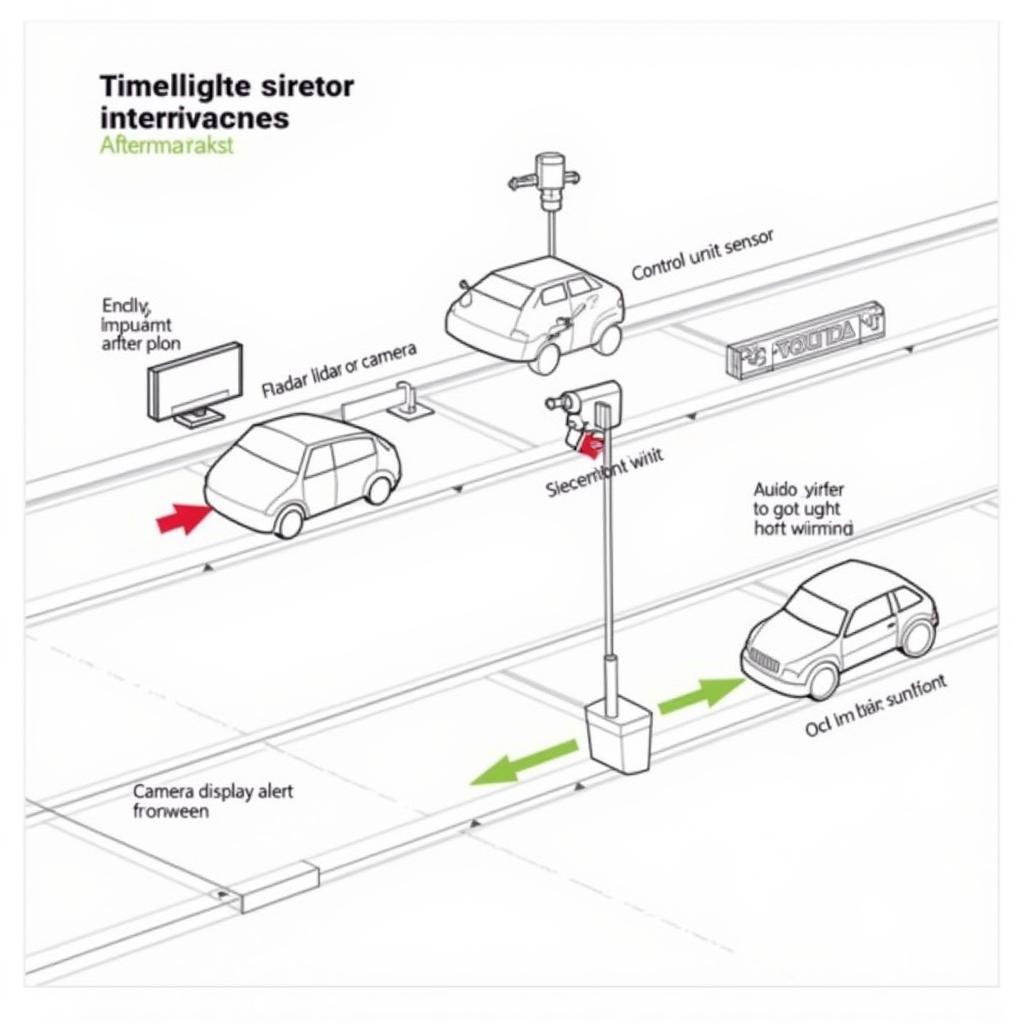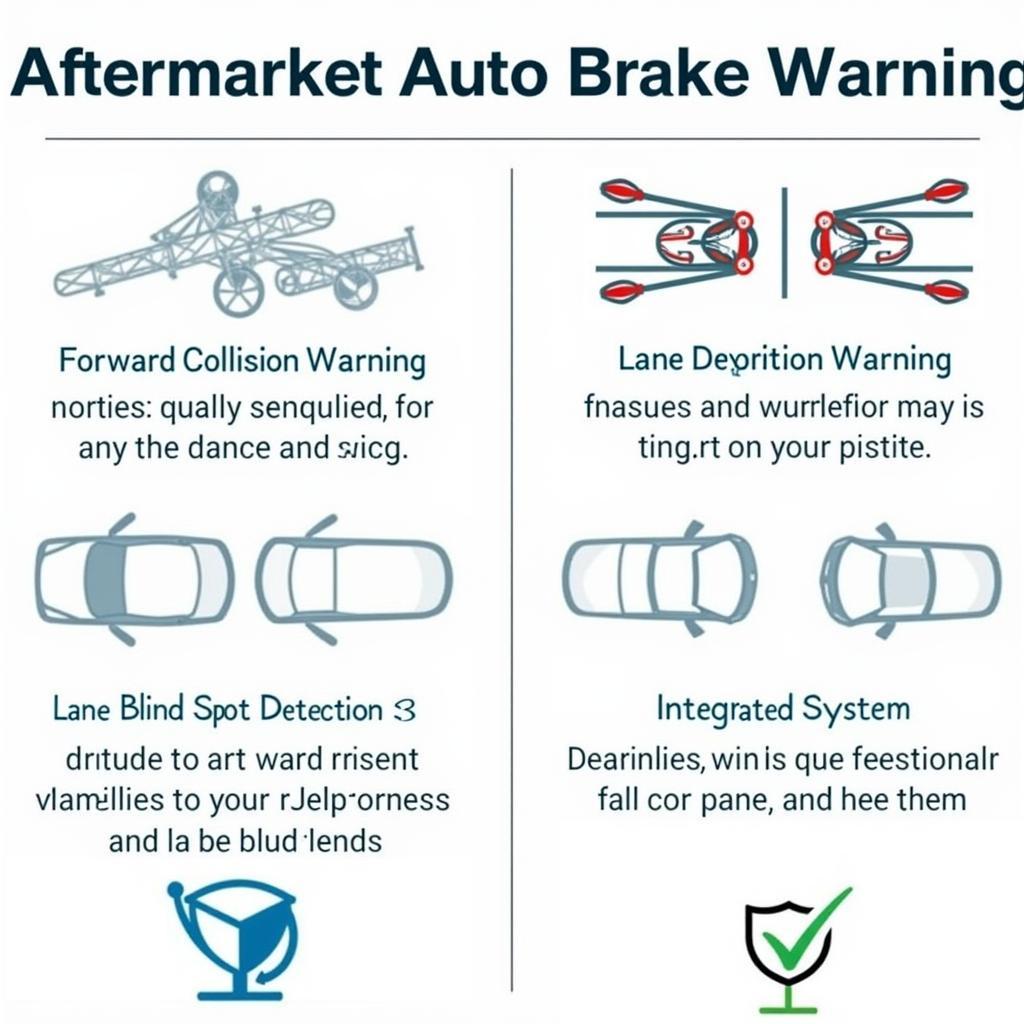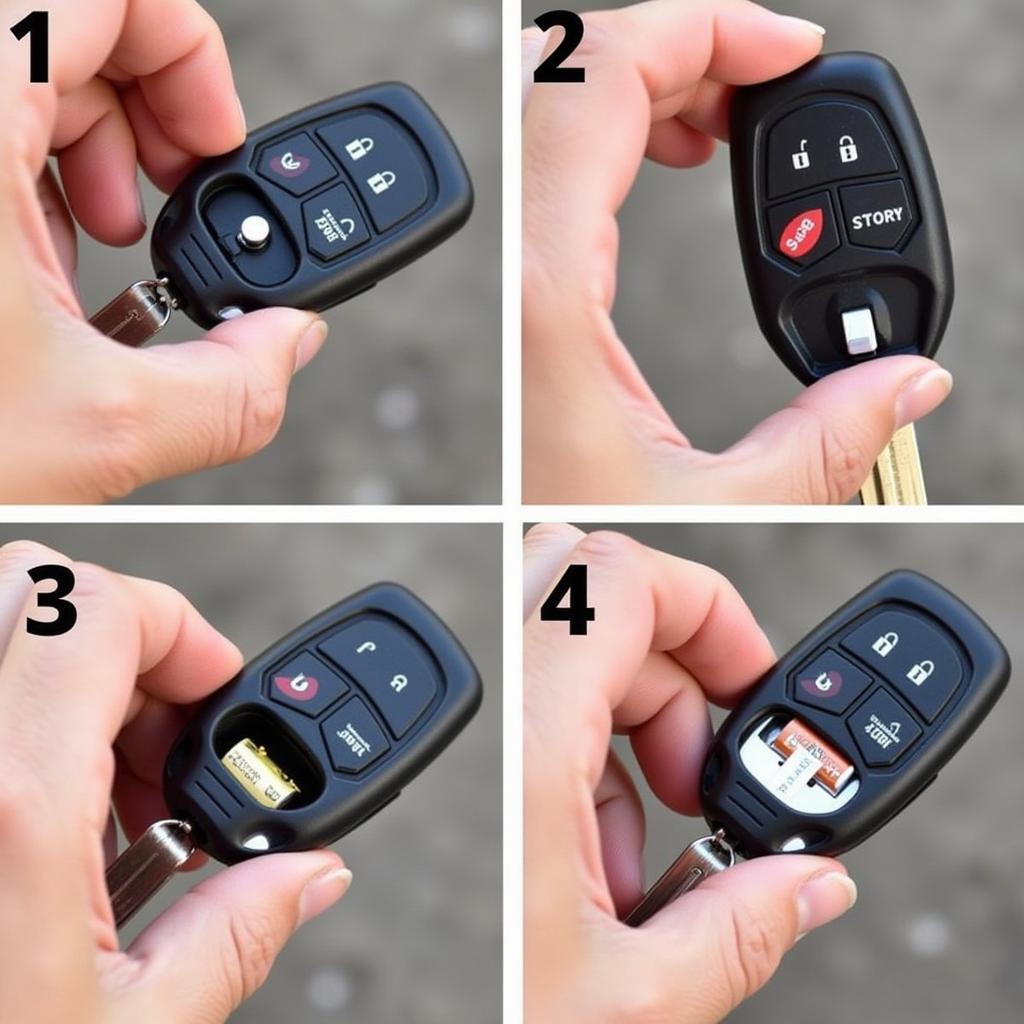Aftermarket auto brake warning systems are becoming increasingly popular as drivers seek ways to enhance safety and reduce the risk of accidents. These systems provide an extra layer of protection by alerting drivers to potential hazards and assisting with braking when necessary. This comprehensive guide delves into the world of aftermarket auto brake warning systems, exploring their functionality, benefits, types, installation, and factors to consider before making a purchase.
 Aftermarket Brake Warning System Components
Aftermarket Brake Warning System Components
Understanding Aftermarket Auto Brake Warning Systems
Unlike factory-installed systems, aftermarket auto brake warning systems are purchased and installed separately, offering drivers flexibility and a wider range of options to suit their specific needs and vehicles. These systems employ various technologies, such as radar, lidar, or cameras, to detect obstacles and potential collisions. Upon detection, the system issues visual and auditory warnings, alerting the driver to take corrective action. In certain cases, the system may even engage the brakes automatically to mitigate or prevent an accident.
How Aftermarket Brake Warning Systems Differ from Factory-Installed Options
While most modern vehicles come equipped with standard safety features like anti-lock brakes (ABS) and electronic stability control (ESC), aftermarket auto brake warning systems provide an additional layer of safety by actively monitoring the road ahead and providing timely warnings and assistance.
One key distinction is the ability of some aftermarket systems to offer features not included in the factory setup, such as blind spot detection or lane departure warnings. Additionally, aftermarket systems can be a more cost-effective solution for older vehicles that lack advanced safety features, providing drivers with access to cutting-edge technology without having to purchase a new car.
 Different Types of Aftermarket Brake Warning Systems
Different Types of Aftermarket Brake Warning Systems
Benefits of Investing in Aftermarket Auto Brake Warning Systems
The advantages of having an aftermarket auto brake warning system extend beyond simply avoiding collisions. Here are some key benefits:
- Enhanced Safety: The primary benefit lies in their ability to significantly reduce the risk of accidents by providing timely warnings and brake assistance.
- Reduced Risk of Front-End Collisions: Systems with forward collision warning are particularly effective in mitigating or preventing front-end collisions, which are among the most common types of accidents.
- Increased Driver Awareness: By constantly monitoring the road, these systems enhance driver awareness, even in challenging conditions like low light or heavy traffic.
- Peace of Mind: Knowing that an extra layer of protection is in place provides drivers with added peace of mind, promoting a more relaxed and confident driving experience.
Types of Aftermarket Auto Brake Warning Systems
The market offers a variety of aftermarket auto brake warning systems, each catering to specific needs and driving styles. Some common types include:
-
Forward Collision Warning (FCW) Systems: These systems utilize sensors to detect potential collisions with vehicles ahead and issue visual and audible alerts to warn the driver.
-
Lane Departure Warning (LDW) Systems: LDW systems monitor the vehicle’s position within its lane and alert the driver if the vehicle starts to drift out of the lane without signaling.
-
Blind Spot Detection (BSD) Systems: BSD systems utilize sensors to monitor the vehicle’s blind spots and provide warnings if another vehicle is detected, aiding in safe lane changes.
-
Parking Brake Warning Systems: Aftermarket parking brake warning systems are designed to alert drivers if they attempt to drive with the parking brake engaged, preventing potential damage to the braking system.
-
Integrated Systems: Many aftermarket systems offer a combination of these features in a single unit, providing comprehensive protection and convenience. For example, some systems integrate FCW, LDW, and BSD functionalities.
Choosing the Right Aftermarket Auto Brake Warning System
Selecting the most suitable aftermarket auto brake warning system for your needs depends on various factors:
- Budget: Aftermarket systems vary in price depending on the features offered and the technology used. Determine your budget and explore options within that range.
- Vehicle Compatibility: Ensure that the chosen system is compatible with your vehicle’s make, model, and year. Not all systems are universally compatible, so checking compatibility beforehand is crucial.
- Desired Features: Consider your driving habits and the specific features you prioritize. If you frequently encounter heavy traffic, a system with FCW would be beneficial.
- Installation: Some systems require professional installation, while others offer DIY options. Assess your comfort level with vehicle modifications and choose accordingly.
Installation and Calibration
Proper installation and calibration are crucial for any aftermarket auto brake warning system to function effectively. While some systems offer DIY installation options, seeking professional installation is recommended, especially for systems involving complex wiring or sensor placement.
Expert Insight:
“I can’t stress enough the importance of proper installation when it comes to these safety systems,” says John Miller, a certified automotive electrician with over 20 years of experience. “Even a slight misalignment of the sensors can affect the system’s accuracy and potentially lead to false warnings or, worse, failure to activate when needed. It’s always best to err on the side of caution and have a professional handle the installation.”
Maintenance and Care
Once installed, aftermarket auto brake warning systems require minimal maintenance. However, periodic checks are recommended to ensure optimal performance. Inspect the sensors for any dirt or debris that may hinder their functionality, and keep the windshield clean in the area where the camera or sensor is located. If you notice any malfunctions or inconsistent behavior, consult a qualified mechanic or contact the system’s manufacturer for assistance.
Aftermarket Auto Brake Warning Systems and Insurance
In some cases, installing an aftermarket auto brake warning system may qualify you for discounts on your auto insurance premiums. Insurance companies often incentivize safety features that reduce the risk of accidents. Contact your insurance provider to inquire about potential discounts based on your newly installed system.
Future of Aftermarket Auto Brake Warning Systems
The automotive industry is in a constant state of evolution, with technology advancing at an unprecedented pace. Aftermarket auto brake warning systems are no exception to this trend. As technology progresses, we can expect to see even more sophisticated systems with enhanced capabilities and greater accuracy.
Expert Insight:
“The future of aftermarket auto brake warning systems is incredibly promising,” says Sarah Chen, a leading researcher in automotive safety technology. “We’re on the cusp of seeing systems that can not only detect imminent collisions but also anticipate and react to potential hazards even before they become apparent to the driver. This level of proactive safety has the potential to significantly reduce accidents and save lives.”
Conclusion
Aftermarket auto brake warning systems offer a valuable addition to any vehicle, providing an extra layer of safety and driver assistance. Whether you’re looking to enhance your older vehicle’s safety features or seeking the latest advancements in automotive technology, there’s an aftermarket system to suit your needs. By understanding the different types, features, and considerations, you can make an informed decision that enhances your safety and peace of mind on the road.

